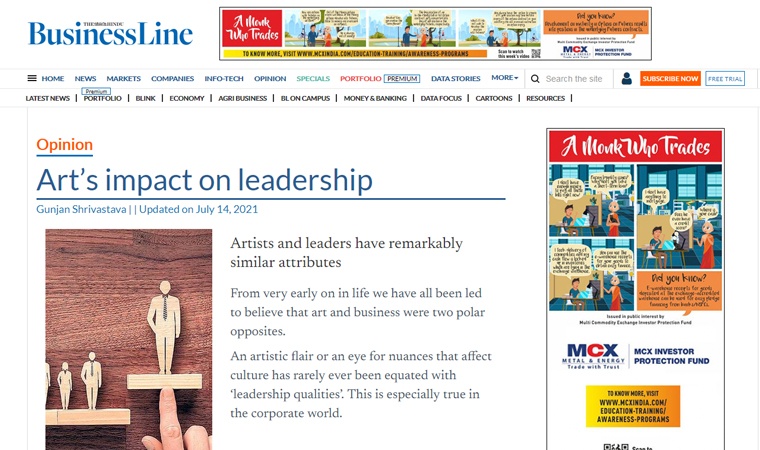Art’s impact on leadership
Artists and leaders have remarkably similar attributes
From very early on in life we have all been led to believe that art and business were two polar opposites.
An artistic flair or an eye for nuances that affect culture has rarely ever been equated with ‘leadership qualities’. This is especially true in the corporate world.
For decades we have separated the two without realising that to a very large extent, art has the distinct capability to lend qualities and insight for effective leadership.
Over the years artists have shaped culture and incited conversations. Examples of this can be seen through variations of the form whether television, theatre, music or film. Art has always played a pivotal role in moulding the culture of the future and leading a generation of change.
So then, if leading through your work is the most common way to determine an impactful leader, then why not look to the arts?
Jeff Bezos, Elon Musk, Warren Buffet, Bill Gates, all have a few things in common — they’re visionaries, dreamers, opinionated and very rarely fit within ‘the mould’.
These traits are all essential to the creative process that any artist embodies.
When we think of the attributes that distinguish a great artist from a mediocre one our minds immediately jump to someone who makes bold moves, thinks and acts with purpose, and drives a vision with unrelenting passion — which exactly the attributes of an exceptional leader.
While seemingly obvious, an artistic sense is not just about aesthetics and expression. It is also about problem-solving.
Having a creative bent can help a leader look at a difficult situation with a fresh perspective, to solve problems. Furthermore, project planning is arguably one of the most pragmatic skills that an artist possesses.
In the corporate world, being a strategic planner is vital for navigating tumultuous situations.
Finally, artists are constantly aware of the environment around them, and draw inspiration from the minutest of details. Similarly, a great leader should possess an innate sense of awareness of the world around him, the opportunities it presents, and the challenges that need to be addressed.
The changing dynamics
Today living in the ‘woke’ culture, traditional styles of leadership may need to evolve in order to cater to the current corporate generation. Leading by example no longer just entails being good at what you do, but rather extends itself to helping others do the same.
Leadership itself should be seen as an art form. This means learning to channel our intuitions and ideas with conviction and eloquence in order to transform them into positive outcomes. Your ability to lead is no longer merely condensed to your own abilities but how effective you are in unearthing the ones of those around you.
The New-Age leadership
When one takes all this into account it easy to see just how connected being a leader is to the essence of being an artist. It requires purpose, dynamism, distinct vision and like its creative counterpart, there’s no one mould that fits all. This in itself would be the definitive gumption it takes to be an artist.
To be a great leader you must lend yourself beyond the confines of a “9-to-5” and ensure that your contribution inspires your team.
Leadership isn’t just about counsel and aid but rather a honed lifestyle that nurtures and sharpens potential.
In what has been the start of a truly defining decade, there is a need for a new narrative in leadership.
This narrative can be defined by qualities of the arts and driven by innovation, empathy, enthusiasm, and risks.
The writer is a professional artist, educator, art critic and Co-founder of You Lead India Foundation


Leave a Reply